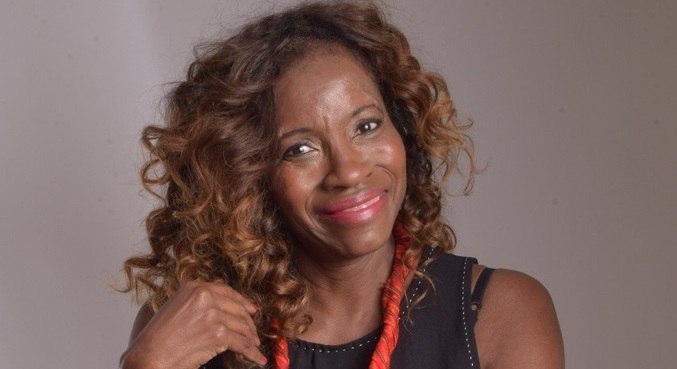[ad_1]
The essays in Why They Hate Us: How Racist Rhetoric Impacts Education (Teachers College Press) explore the relationship between racist things said by former president Trump (and others) and the experience of minority students. The editors of the volume are Lindsay Pérez Huber, an associate professor in the Social and Cultural Analysis of Education program at California State University, Long Beach, and Susana M. Muñoz, an associate professor and program coordinator of the Higher Education Leadership program at Colorado State University.
They responded via email to questions about their book.
Q: Why is there so much racist rhetoric out there? Several chapters of the book reference President Trump. How bad was he in terms of rhetoric?
A: Racist rhetoric exists because of racist beliefs. When President Trump took the political stage in 2015, he espoused racist rhetoric and used it as a mechanism that would hinge his entire presidential campaign (remember how he announced his presidential bid in June 2015). Before, during and now after his presidency, we have seen how this rhetoric has opened the discursive doors to engage in a public discourse that is more overtly racist, where others feel more comfortable to express their racist views and to move from those beliefs to racist violence.
In the book, we refer to the 2017 Unite the Right rally in Charlottesville, Va., and the 2019 anti-Latinx massacre at an El Paso, Tex., Walmart as examples. However, a central argument we make in the book’s beginning chapters is that we must understand what is at the root of this racist rhetoric and violence. That is ideologies of white supremacy. We borrow from Judge Robert Carter’s metaphor of symptom and disease to understand the consistent prevalence of racism over time in the U.S. In 1988, Carter reflected on the failure of the landmark Brown v. Board of Education (1954) decision to end school segregation. He argued that racial segregation in schools has persisted because the NAACP legal strategy focused on racism, a symptom, rather than the causal disease of white supremacy.
However, as comedian Dave Chappelle pointed out in 2018, we can’t give Trump too much credit when it comes to the racist rhetoric we have seen during his time in the White House (and now after). Chappelle argues, “Trump is getting too much credit. He’s not making the wave, he’s surfing it.” The first chapter of the book provides a brief overview of presidential candidates and political leaders who have used racist rhetoric to gain political support decades before Trump. The second chapter traces the wave of racism even further, exposing the ties between powerful anti-immigrant organizations, members of the Trump administration and earlier eugenics movements in the U.S.
Q: Will things get better now that he’s no longer president?
A: So, will things get better now that Trump is no longer president? Unfortunately, this has not been the case. Since the 2020 presidential elections, we have seen racist violence persist. Called to action by Trump, white supremacist and neo-Nazi groups attacked the U.S. Capitol on Jan. 6, 2021, leaving several people dead (see our blog for commentary on this event). Anti-Asian racism has increased dramatically since Trump’s derogatory comments on COVID-19 as “the China virus” and “kung flu virus.” However, we do see hope. The Black Lives Matter movement has sparked increased awareness of anti-Black racism, structural racism and white supremacy since protests [against] the murder of George Floyd in summer 2020. Some of Trump’s racist policies have been ended by the Biden administration, including the 1776 Commission, migrant parent deportations, the Muslim travel ban and the construction and funding of the U.S.-Mexico border wall.
Q: How is the racist rhetoric the same (and different) from that experienced by past generations?
A: In the book, we discuss the late professor Derrick Bell’s theory of racial realism, which holds that racism has and will always be a permanent fixture in U.S. society, shifting and evolving over time with the changing complexities and conditions of racism. When we think about the history of higher education, we remember how the National Guard was deployed to escort African American students onto campus who faced white peers who yelled and spat at them.
Today, we see the presence of white supremacy manifested when nooses are hung in residence halls, when swastikas are painted outside of campus buildings and when classmates joyously chant “build the wall” as Latinx students pass by. Thus, through time and situated by different conditions and contexts, racism may look and operate differently. Regardless of time and shifting contexts, what remains the same is the disease of white supremacy from where racism (in all forms) emerges. Until we can engage in honest and uncomfortable conversations about the legacies of white supremacy that exist today, racism will continue to persist.
Q: How does the rhetoric affect Dreamers?
A: Our book highlights that anti-immigrant rhetoric impacts not just undocumented immigrants, but all minoritized communities. For example, students of color who were not immigrants were also negatively affected by the racist rhetoric that targeted undocumented communities. In addition, contributing authors documented how students of color can internalize the rhetoric espoused by the Trump administration to verbally assault and harass Latinx classmates and other minoritized students. These acts produced concern, fear and anxiety among many groups of students but were particularly acute for those without legal status. However, we also learned that immigrant students became empowered to speak out against racist rhetoric and anti-immigrant hate. Some even worked together to create counterspaces to build solidarity and community for themselves and each other.
Q: How does the current debate over critical race theory reflect the issues you write about?
A: First of all, it has been frustrating to watch how critical race theory (CRT) has been misused, misconstrued and co-opted by political pundits and the media to further the right-wing conservative agenda to maintain structures of oppression and the status quo. Suddenly, any mention of race and/or racism is CRT. This is a completely inaccurate account of a framework that has been utilized by scholars for decades. People who know nothing about CRT have developed an ill-informed opinion of this framework because it threatens their view of racism as a problem of the past.
When racism is perceived as an historical artifact, it deters a critical analysis of structures of power and the inequitable outcomes and conditions faced by people of color today. As CRT scholars, this framework has served as an invaluable tool for analyzing how race, racism and nativism are fundamentally entrenched in our immigration system, our political system and our education system. Our book documents the stories of pain, violence and trauma caused by racism. It also documents the stories of resistance and resiliency of communities of color who fight against it. When we begin to recognize how racist nativism is articulated in everyday life within the U.S. context, we have the power and conviction to shift our policies and practices to create a humane and just society for immigrant communities. We can’t sit back and witness events like the Unite the Right rally in Charlottesville or the insurgents at the U.S. Capitol building and not interrogate race and racism.
[ad_2]
Source Link




